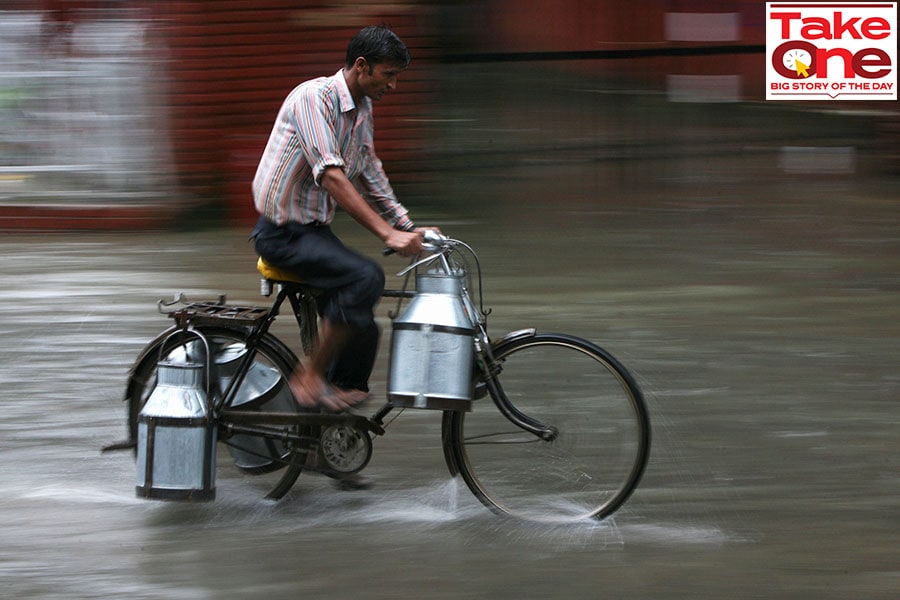
Will monsoon sway milk prices in India?
Pan-India, wholesale milk prices have increased 10.7 percent year-on-year and 0.8 percent month-on-month in May. Milk prices in south India are up 8.4 percent year-on-year despite a steady deceleration in milk inflation in the region
 Milk production has grown every year irrespective of deficient or excess rainfall in the period between FY1992 and FY2022, according to data analysis by ICICI Securities.
Image: Mukesh Gupta/ Reuters
Milk production has grown every year irrespective of deficient or excess rainfall in the period between FY1992 and FY2022, according to data analysis by ICICI Securities.
Image: Mukesh Gupta/ Reuters
Is your breakfast going to get costlier soon? Well, the answer may lie in the start and spread of monsoon in India, which so far has been late and scanty. The price of milk, a key food item and essential ingredient in India’s favourite beverages tea and coffee, is typically determined by supply, which is influenced by the availability and the health of cattle and monsoon. As the price of milk is already rising, there are concerns that milk price inflation may get acute as the beginning of monsoon remains deficient in India so far.
“While we do not model any impact on milk production, we believe any material inflation in food grains will likely result in higher prices of cattle feed and it may impact the margins for the farmers. We believe there exists a potential risk of higher milk procurement prices for dairy companies,” says Aniruddha Joshi, analyst, ICICI Securities.
Steady investments in cattle feed by farmers, which has improved the breed of cattle in India and increased the cattle population, has resulted in rising supply of milk. The cattle population is growing at 1.5 percent per annum. Farmers also tend to invest more in cattle rearing during weak monsoon years as they fear lower agri (farming) income. “Apart from the 1.5 percent cattle population growth, the steady improvement in animal productivity is also resulting in higher milk production,” Joshi adds.
However, milk production has grown every year irrespective of deficient or excess rainfall in the period between FY1992 and FY2022, according to data analysis by ICICI Securities. In fact, production has increased even in those years when monsoon deficiency was higher than 15 percent. “The correlation coefficient between monsoon deficiency and milk production is just 0.17 percent over FY1992-2022,” Joshi adds.
Private forecaster Skymet Weather projects a dismal outlook for the next four weeks, between June 9 and July 6. India Meteorological Department (IMD) also estimates a patchy rain coverage in the week of June 30 to July 6. Since June 1, there has been 54 percent rain deficiency in the country with 53 percent deficiency over the south peninsula, 80 percent deficiency over central India, 10 percent deficiency over northwest India and 53 percent deficiency over east and northeast India.







